A melodic trip through dessert history
One lifetime is not enough to try the sweets in Japan, from traditional wagashi to pastries and chocolates from famed French confectioners to hybrid creations melding East and West.
Japanese language sparkles with onomatopoeia (words formed from an existing sound and intended to imitate that sound). Charin charin (the sound of a bicycle bell). Potsu potsu (light rain). Kuru kuru (sushi conveyor belts). Come along a sensory tour of Japan’s most delectable desserts!
Mogu mogu (to chew a lot) — Mochi
The first sweets in Japan were dried fruits and nuts. In the 8th-century, buns and dumplings arrived from China. The Japanese started making rubbery mochi from steamed and pummelled rice. Today, it’s dipped in soy sauce or filled with bean paste, fruit, cream or ice cream.

Children are shown a rabbit pounding mochi with a mallet on the moon. Celebrities thwack it on TV. It’s thrown at neighbours to celebrate new buildings. Sadly, every New Year, a number of elderly people die choking on the customary blobs.
Warabi mochi (from bracken root starch) are softer, jiggly cubes topped with kuromitsu brown sugar syrup and kinako roasted soybean powder.
Tsubu tsubu (chunky, small bits) — Matcha Parfait
From the 16th-century, wagashi evolved with tea ceremony culture. They’re exquisite miniature artworks but some Westerners might find them an acquired taste. Like yokan — brown seaweed jelly blocks with sweet potato, red bean or chestnut.
More modern matcha green tea treats draw crowds at cafes like Saryo Tsujiri, in Kyoto. The parfaits are subtly sweet, textural delights with mochi balls, berries, matcha ice cream, whipped cream and sponge.
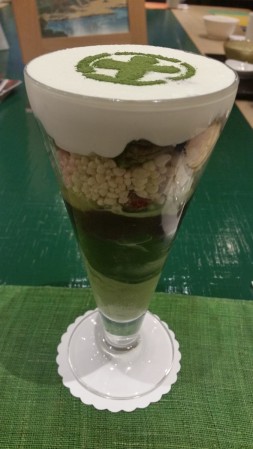
Japanese food is generally less sweet than in the West. Europeans imported cane sugar in the 16th-century. It was an expensive rarity until the Japanese cultivated it in the 17th- century and not widely used until after the mid-19th-century.
Fuwa fuwa (soft, fluffy) — Western Style Cakes
Westerners introduced baking with flour, butter and sugar. The Portuguese brought kasutera castella in the 16th-century via Nagasaki. Try this moist sponge at Bunmeido, a chain from Nagasaki.
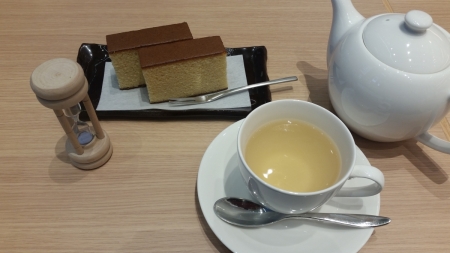
Japan has relatively little domestic baking tradition. Many people don’t own ovens and go out for cake and pastries. Strawberry shortcake (sponge, cream, fresh strawberries) has become Christmas custom (shared after Kentucky Fried Chicken).
Zaku zaku (crunching) — Dove Sable Biscuit
Kamakura’s famous souvenir, the Hato Sabure, is also sold in nearby Tokyo and Yokohama. First created in 1912, each butter biscuit is handmade perfection.

From 1853, America forced Japan out of around 200 years of near isolation and Western influences streamed in. Baked goods gained favour. Post-World War II ravaged Japan, unable to grow enough rice, received bread and flour from the US. In 2011, spending on bread surpassed rice.
Sube sube (smooth, rounded) — Dairy Desserts
Dairy was another Western concept and initially, commonly deemed repulsive. Today, fans gush over pancakes toppling with cream. Queues swarm for cheesecakes at Osaka brands Pablo (choose from rare and gooey or medium and firm) and Rikuro Ojisan.
Toraya, founded in early 1500s Kyoto, provides sweets to the Imperial Palace. Old-style wagashi sales have fallen. Toraya’s Omotesando Hills Tokyo café serves updated desserts like pudding with kuzu (root starch), caramel sauce and a citrus jam centre.
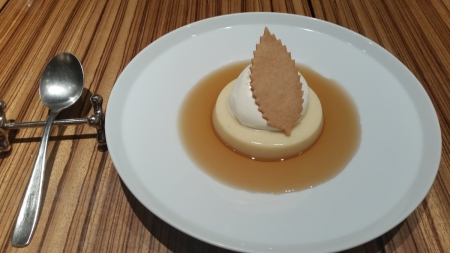
Yokohama claims Japan’s first ice cream shop from 1865. Soft serve in Japan, called “soft cream”, comes in flavours wacky even to the Japanese. Squid, spinach, sea urchin, corn soup, wasabi, whitebait, seaweed…
Don’t miss Cremia — crammed with Hokkaido whipped cream and milk fat. It`s sinfully lush.
Toro toro (melts in the mouth) — Chocolate
It’s believed Dutch sailors introduced chocolate to Japan hundreds of years ago but it really caught on after World War II during the US occupation. American soldiers tossed it to smitten children. High-end chocolate stores boomed from the early 2000s.
KitKats arrived in 1973 as a marketing dream, sounding like “Kitto katsuto” (“win for sure”). They became good luck charms, especially for exam students. Hundreds of zany flavours have included pineapple, soy sauce, sake, sports drink, aloe yoghurt, ginger ale and apple vinegar.
KitKat Premium Chocolatory shops sell more expensive concoctions like Hokkaido butter or Uji matcha with sakura (cherry blossom).
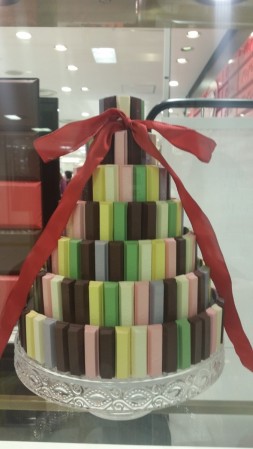
Hokkaido cream is the star again in Royce nama fresh chocolate. The Calbee snack brand’s Royce-smothered potato chips are a sweet/salty mashup.
Older Japanese may feel nostalgic pangs for the baked sweet potato vans that still ring with vendors’ cries, “Yaki-imo, yaki-imo!” but most sweet tooths today crave more than a cooked tuber.
Japan is a food obsessed nation. You’ll be in a constant state of doki doki (heart pounding) and waku waku (excited anticipation) discovering its endless treats. It really is the best place to gaba gaba (guzzle with gusto)!
Sources: Richie, D., A Taste of Japan, Kodansha International Ltd, 1990
Sosnoski, D., An Introduction to Japanese Culture, Tuttle Publishing, 1996
Sakamoto, Y., Food, Sake, Tokyo, The Little Bookroom, 2010
Confectionary, Begin Japanology,(documentary), NHK (Japan Broadcasting Corporation), 2012
Mochi Rice Cake, Begin Japanology, (documentary), NHK (Japan Broadcasting Corporation), 2013
Wagashi, Japanology Plus, (documentary), NHK (Japan Broadcasting Corporation), 2014
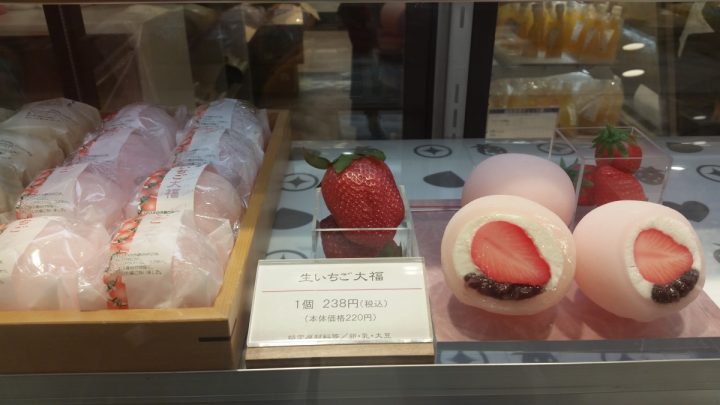
I didn’t feel toro toro recently because I forgot to buy chocolate. Dark choc is so good and don’t need to eat a lot, you will feel toro toro and satisfied by just a little bite.
Some cheap choco can’t make me feel toro toro because there’re too much sugar.
Great post, I hope to see your post about food and dessert more. ;3
LikeLike
Thank you! I get what you mean about cheap, waxy chocolate. Toro is also the word for ‘fatty tuna’, the expensive, melt in the mouth tuna. I might write a story about my favourite food anime but I have to watch some more. Hard work – watching anime for research 😉
LikeLiked by 1 person
Really? I’m looking forward to read your work. :3
LikeLiked by 1 person
I’ve tasted Mochi before and few different Japanese Kitkat flavors. The parfait also looked good but I’m not sure if I’d actually eat it. LOL
thanks for sharing.
LikeLiked by 1 person
Yes, you have to be a green tea fan for that parfait – I liked it but there were parts I would describe as “grassy”! Thanks for reading my story!
LikeLiked by 1 person
This was a great, and salivating, post. I hadn’t known about any of these, but now I’m drooling all over those pictures and descriptions aaah.
I’m always fascinated by how Japan grew and absorbed when they opened their doors to the western influences. This was a neat history lesson mixed with the best of desserts 😻😻😻👌
One day I’ll experience all those Japan exclusive sweets for sure 🙏
LikeLiked by 1 person
Thank you for reading and for the lovely comment! Yes, I enjoyed researching Japanese history combined with eating!!
LikeLike
Yum! All of these look so delicious. Ah, now I’m craving something fuwa fuwa and toro toro. I’ll probably go outside later and buy something…ugh, and it’s going to be all your fault.
Just kidding! But I’ll still go out. I really am craving something sweet to eat. This is such a lovely post. Thank you for sharing it at my blog carnival. My carnival usually receives anime/manga-related posts, so posts about Japanese sweets like this are great change of pace. Thanks again. Cheers!
LikeLike
Thanks again for doing the blog carnival! I’m relatively new to anime so feel more comfortable writing about other parts of Japanese culture but I’m getting more and more passionate about anime! Love the food in Japan so much. Every trip I come back with boxes of biscuits and sweets 😀
LikeLiked by 1 person
Oh! Good for you. Welcome to anime paradise. 😉 And I’ll be looking forward to more of your posts. Keep on doing what you are doing. Cheers!
LikeLiked by 1 person